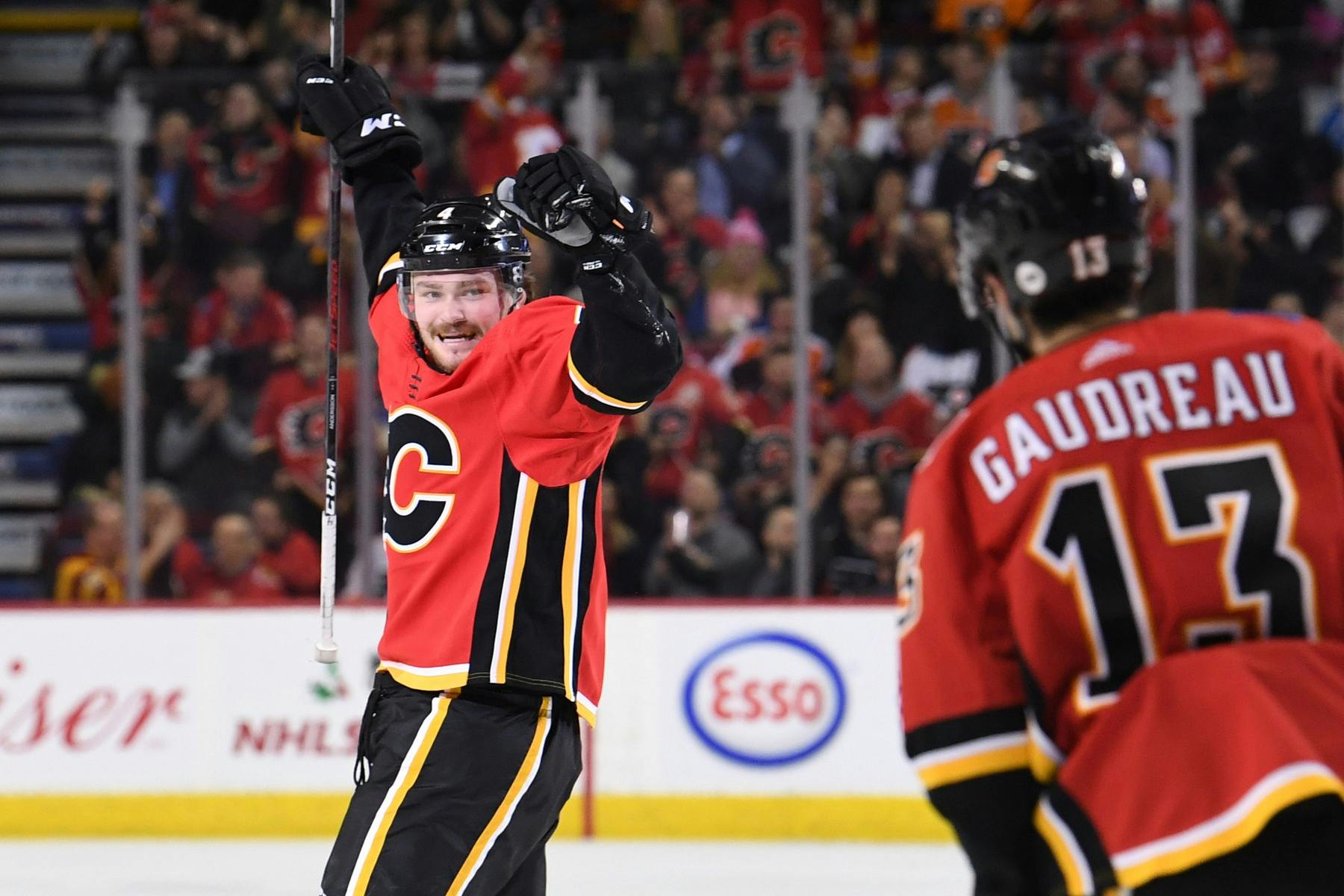Nation Sites
The Nation Network
FlamesNation has no direct affiliation to the Calgary Flames, Calgary Sports and Entertainment, NHL, or NHLPA
Charting Flames player production paces
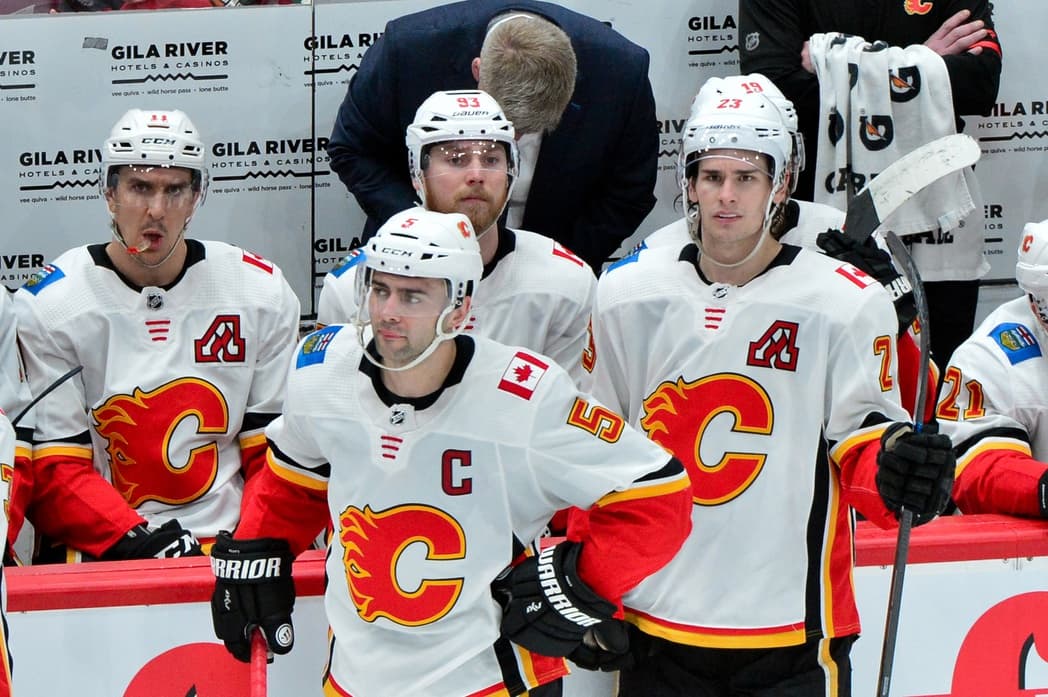
Photo credit: Matt Kartozian-USA TODAY Sports
By Craig Petter
Jan 9, 2020, 10:00 ESTUpdated: Jan 8, 2020, 23:47 EST
Once a team hurdles the midway mark of their season, the picture of its ultimate finish loses much of its original haze. Certain patterns have been set and sustained, and, barring subversion, will ring more-or-less true come early April, including point projection trends.
While the picture of Flames’ production was pretty as a portrait last season, this year’s image is a stroke greyer, as most player stats sputter compared to last season. While the quantity of career-high point totals for Flames players was in the double-digits last season, only four players are currently slated to crack such heights for themselves. Their highest scorer this season is 38th league-wide in points (Matthew Tkachuk), whereas five Flames players alone resided in the top 38 last season.
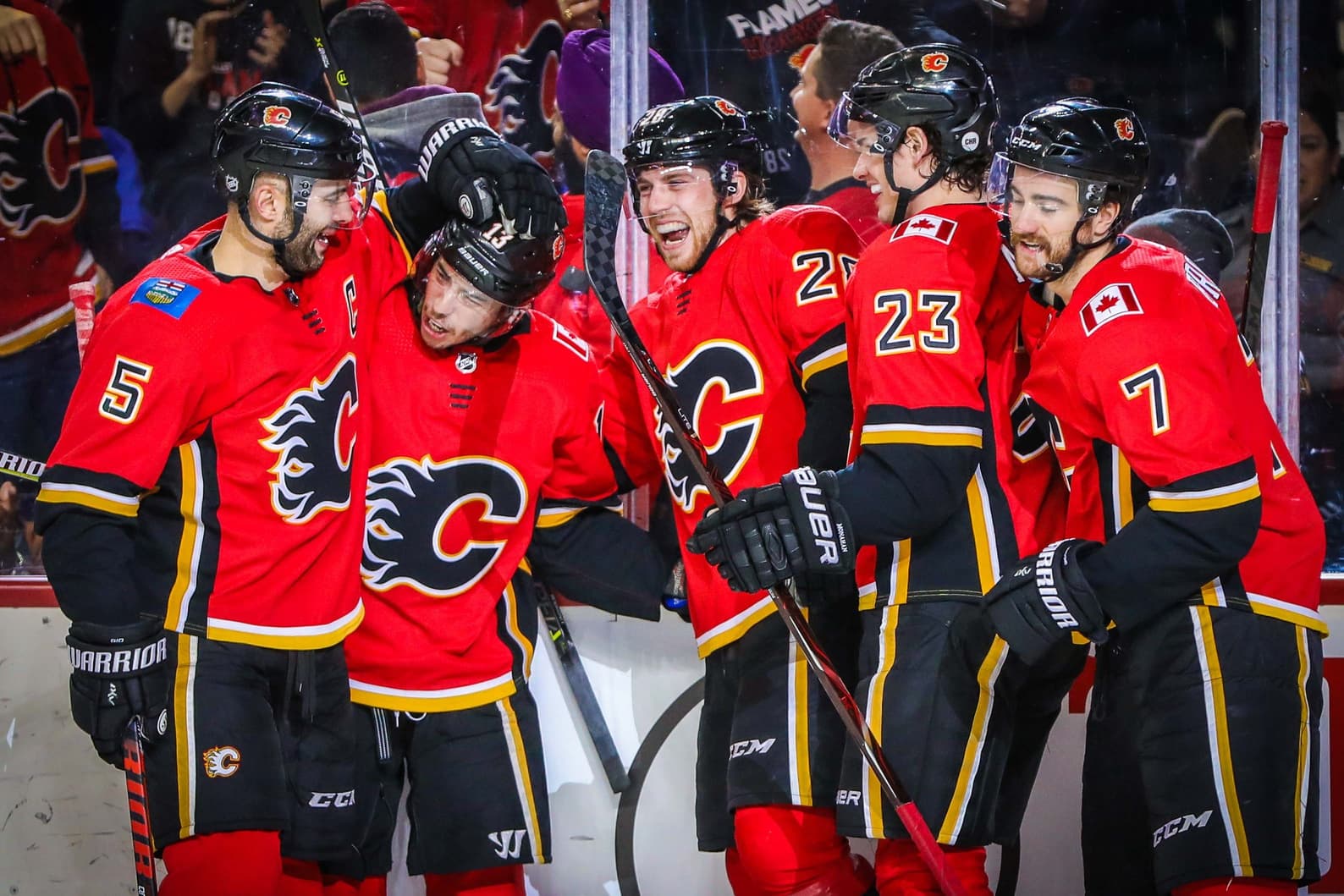
Comparative shortcomings, however, cannot be pinned on the individual players themselves. The entire roster is simply scoring less goals. Last year, the Flames potted 289 goals, but this year’s team is on pace to score only 220, which is outweighed by their projected 246 goals against. As they battle for wildcard spots this year instead of leading the conference, the deficit shows.
Since the Flames still boast the same core, it’s not exactly unfair for fans to have expected similar excellent outputs from individual players. The first half of play, however, set an uncomfortable precedent for team-wide production, which seeped into underwhelming campaigns for many of the team’s stars. Not everyone is playing below expectations though, and hockey is a streaky game. The first half of the season saw some bright spots, so more bright spots could appear in the latter half too. Current production paces, however, provide a realistic glimpse of where players will finish if the pattern after 45 games is maintained, and also pinpoint exactly who could still step up their output and who deserves premature praise for their pace.
The cold (borderline glacial)
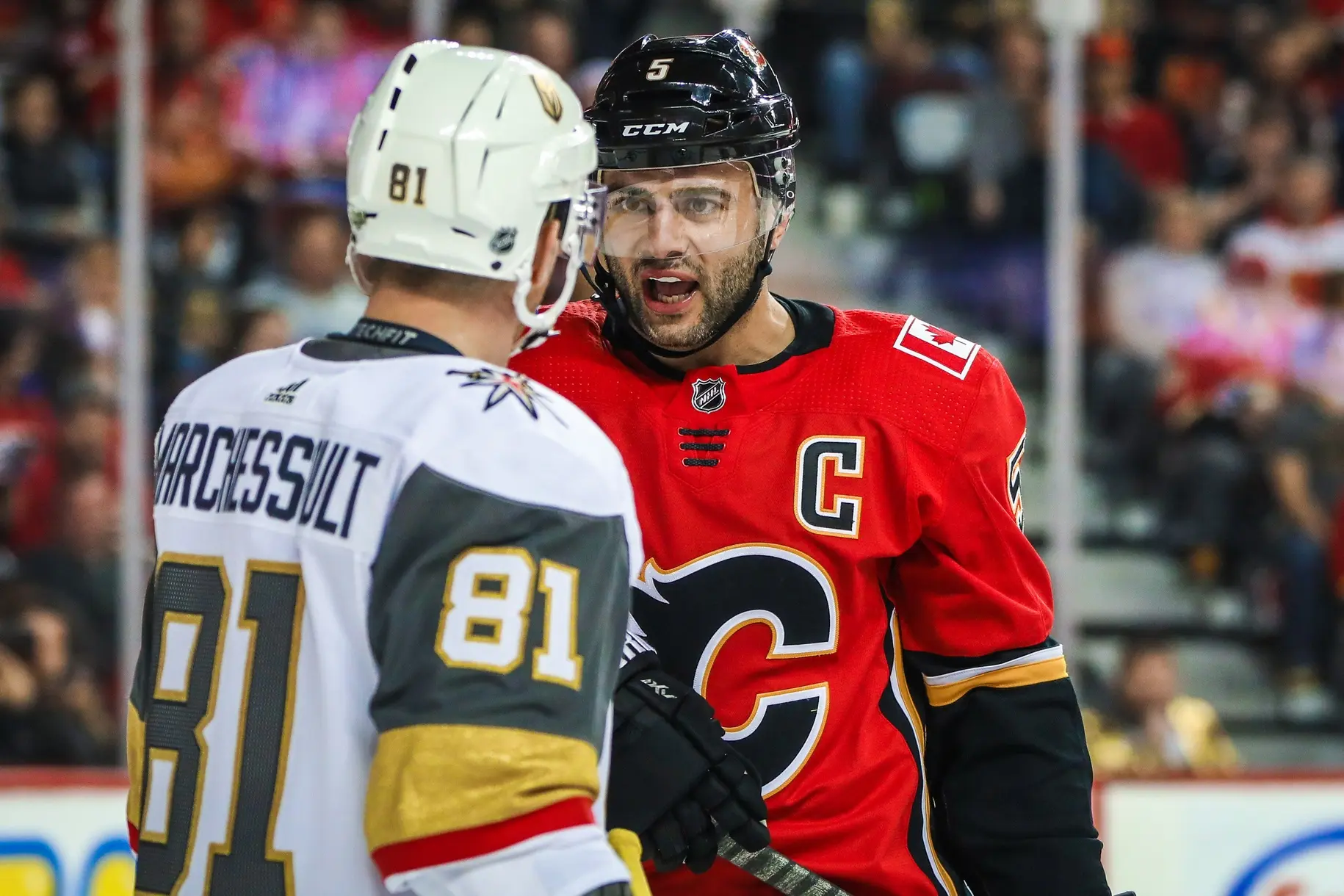
Mark Giordano (on pace for 36 points)
Offensive production, obviously, is not the most important facet for an NHL defenseman’s game. As the job title implies, their contributions prevent goals before providing them. A defenseman that puts up stellar numbers, however, is a beyond-welcome bonus for any successful hockey team. While his defensive play this year has often been commendable, Giordano is projected to exactly halve his enormous point total from last season. In fact, he’s on pace for his worst production stats in a full season in eight years. Sure, he’s aging and foremost a dependable defenseman, but the decline from last year has been extraordinarily sudden and shockingly steep so far this season.
Mikael Backlund (36 points)
He’s never piled up ridiculous offensive stats, but Backlund has served in recent seasons as a reliable 45+ point scorer. As an effective two-way fixture on your second line, such numbers are perfectly acceptable, and his consistent minutes and power play privileges warrant a similar rate. His scoring has dipped, however, and unless he adjusts better to playing on the wing now and flourishes in the latter half of the season, paces indicate his worst 76+ game season ever. Ouch.
Johnny Gaudreau (64 points)
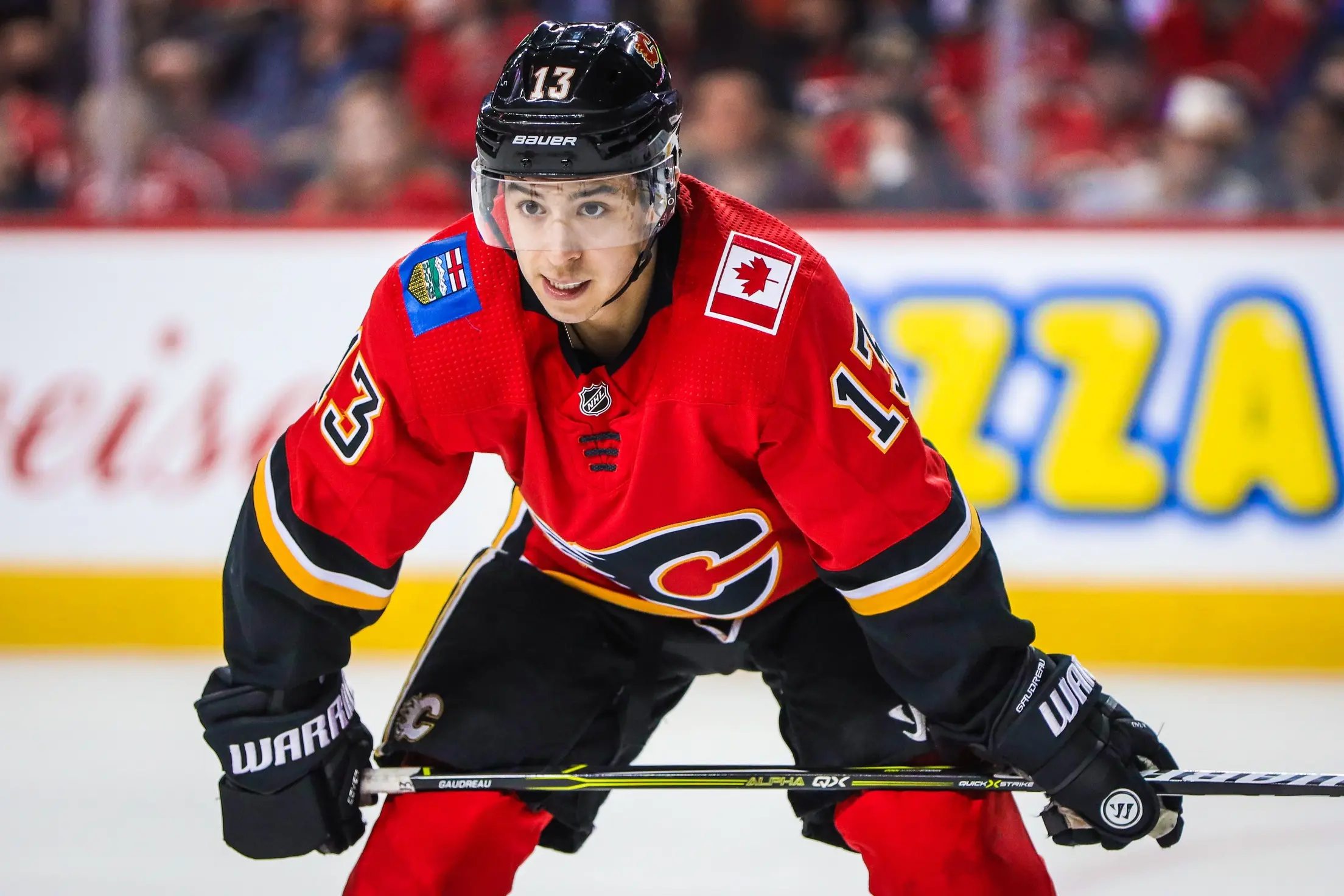
Despite an auspicious recent surge, Gaudreau’s pace still casts a thin shadow of his offensive capabilities. Mere months after a ruthless 99-point campaign, Johnny Hockey’s production rate won’t even see him post two-thirds of that output. 64 points is a great season for your average top-six forward in the NHL, but Gaudreau’s past stats transcend the average. He’s earned the status of an NHL superstar with 90+, 80+, 70+ point seasons in his young career. Hopefully this season’s a blip on the otherwise upward career trajectory, or (ideally) he maintains his recent upswing and silences this season’s crowd of critics. If not, he might fail to eclipse his rookie season total.
Noah Hanifin (20 points)
A spot on the second power play unit, 33 points last year, 32 and 29 respectively the seasons prior. The 22-year old defenseman was rising, cruising along at more and more promising altitudes, only to freefall a touch so far this season. His single power play point does not help his case, but Hanifin is nothing if not young and could resume his ascent in plenty of seasons to come. This year, however, is looking a little grim offensively, and likely incongruous with his October hopes.
The lukewarm (considering their potential)
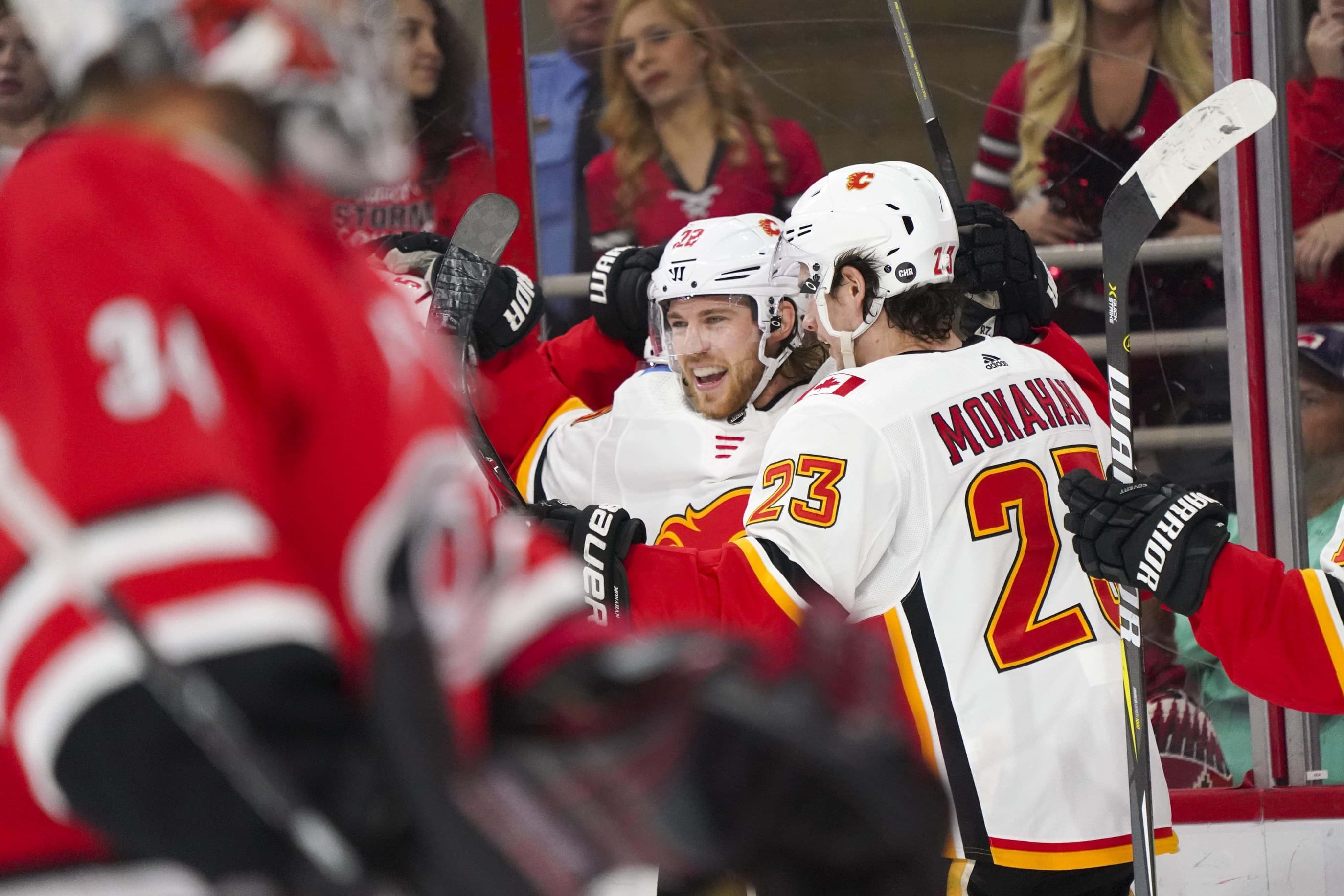
Sean Monahan (62 points)
Monahan’s pace currently veers him towards his lowest goal-scoring effort since his rookie season, but said underwhelming total still represents 26 goals in the National Hockey League. Disregarding precedent, that’s a solid season which hovers among his past totals in the high-20s, low-30s range. 62 points also mirrors multiple prior seasons of his which were regarded without derision. Yet last year he sniped 34 goals, and unless the second half of the season signals a resurrection of last year’s 82-point ghost, his ultimate production will be lacklustre. Considering Calgary’s precarious playoff position, an uptick from merely ‘solid’ would be invaluable.
T.J. Brodie (30 points)
Despite hurtling towards his lowest offensive yield in a 76+ game season since his rookie campaign, multiple caveats complicate a simple assessment of Brodie’s production. First of all, Brodie scarcely logs any power play minutes anymore, which have accounted for up to 15 points for him in previous seasons. Also, he’s averaging five fewer minutes a game compared with said peak campaigns. Most notably however, he’s overcome some harrowing health concerns already this year (which need no explanation). He recovered both quickly and admirably however, seamlessly returning to his top pairing position. The overall points aren’t there this year, but you cannot deny that circumstance has been significantly freezing his stick so far.
Elias Lindholm (62 points)
By far the hottest of the lukewarm, Lindholm probably doesn’t belong in this category. Though expected to tally a sizeable 16 fewer points than last season, Lindholm has screamed consistency this year and vaunts some notable improvement over last year concerning goals. His current scoring pace envisions a 33-goal season, which would mark the Swede’s first crossing of the 30-goal threshold in his career. Checking off such a milestone is nothing to scoff at, even if last year’s impressive assist patterns (51 in total, compared to this year’s expected 29) are absent. Reconfigured at a new position alongside new line-mates since November could drastically alter anyone’s offensive tendencies, so just how Lindholm garners his points over the next 37 games will be a compelling case of study. Nonetheless, his overall point total looks like it will take a substantial dive, which is the only reason I hesitate to place him any higher on this post. Don’t get me wrong, his offensive contributions have flashed brighter than almost anyone else on the roster, but from a standpoint that merely compares his projected output with flickers of past statistical success, the low assist count limits any unequivocal praise.
The hot (or at least those surpassing precedent)
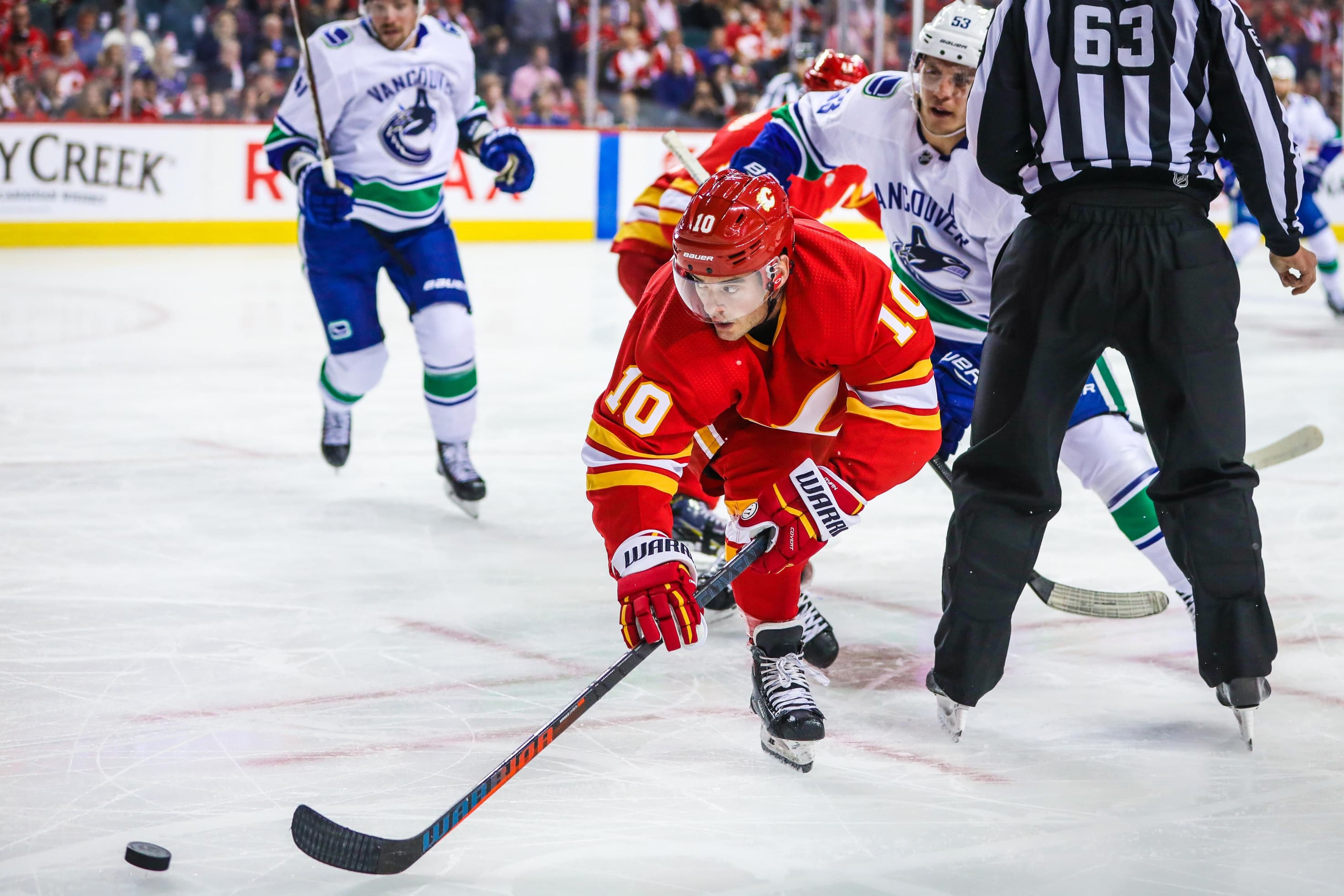
Derek Ryan (40 points)
The latest chapter of the improbable Derek Ryan story infuses it with even more impressive accents. In his fourth NHL season at the tender age of 33, the undrafted centreman is producing at a career-high pace, continuing his long-winded, globetrotting ascent to the Flames’ third line. From WHL pivot to USports veteran to Austrian all-star, Ryan’s dedication has been rewarded with not only an indispensable role in Calgary but also in the best offensive season of his career. It’s a peculiar case, but hitting 33 before you peak at the NHL level is undeniably neat, and his projected numbers prove it.
Andrew Mangiapane (28 points)
Since he’s already eclipsed last year’s total number of games, the sophomore Mangiapane crushing last year’s point total was inevitable. His name was ascribed on the scoresheet only 13 times last year, but if he maintains his pace, he’ll double the recipe and sprinkle a few bonus assists on his totals too. 28 points is not terrible for your first season slotted in a tentative top-six role, and the winger’s skill-set should only catapult his production higher and farther in the future.
Matthew Tkachuk (70 points)
Tkachuk cannot be discredited for leading the offensive onslaught for the season’s first half, despite failing to match his pace from last season. In fact, he deserves little criticism other than the obvious concession that he’s projected to fare a tad worse. This fact, however, is getting trite and applies to practically the entire roster. Unless he ups his already respectable ante, Tkachuk will only miss last year’s eruption by seven points. His 28-goal pace might barricade him from any expectations of elite goal-scoring that were placed upon him after last year’s 34 goal barrage, but his nearly equal projected assist count amends said under-performance. His output still promises wonders, and the numbers deem him the Flames’ most valuable contributor with the puck on his stick.
Rasmus Andersson (22 points)
Another sophomore netting a career-high already in goals and projected to do so in points, Rasmus Andersson is another (rare) case of improved numbers from Flames. Last year’s pleasant surprise and this year’s steady vanguard, Andersson has proven mounting prowess from the blueline which has earned him a berth on the second power play unit. The ceiling’s tall for the young Swede, but this season’s scoring pace is already predicting some comparative offensive success. I do not weep for the future.
